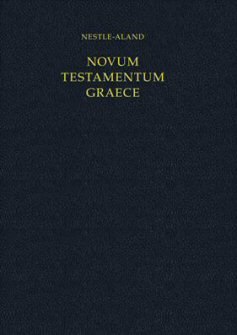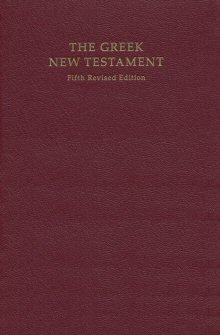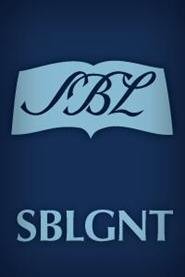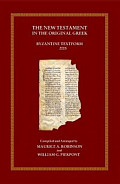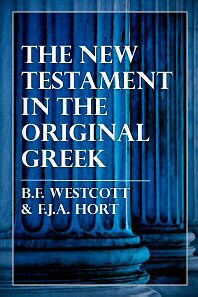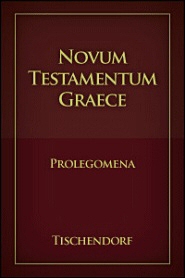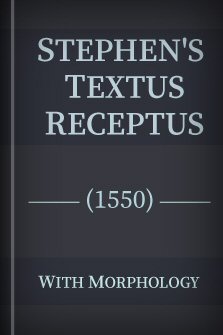Greek Texts Product Guide
Introduction
The history of the Greek text of the New Testament reads like an adventure novel. Since the original composition of these texts until present day, they have been perpetually copied, heavily utilized, beautifully illustrated, secretly hidden, burned, buried, translated, printed, and analyzed. There are three basic categories of the GNT: critical texts, codices and manuscripts, and other Greek texts. Critical texts are a modern innovation where the Greek text is presented above a critical apparatus that identifies variant readings and where they are found. Codices are ancient books in which leaves of parchment or vellum, transcribed on both sides, were bound together much as a modern book. Manuscripts are mostly just fragments in varying states of decomposition, but tend to be the earliest witnesses to the text of the New Testament. Other Greek texts include non-critical editions from the Reformation to modern day.
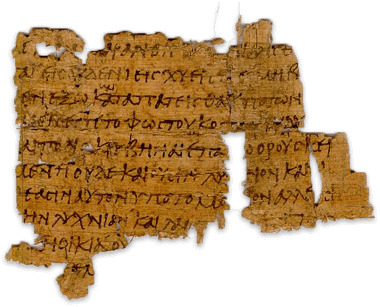
Critical Texts
Codices & Manuscripts
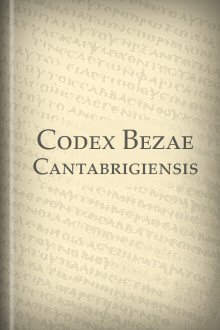
Codex Bezae Cantabrigiensis
Codex Bezae Cantabrigiensis (Codex Bezae) is a 5th century vellum codex, a Greek-Latin diglot written in uncials. The codex contains most of the Gospels and Acts, and a fragment of 3 John. The codex is identified in text critical apparatuses as Dea or 5 (Gregory-Aland), or δ 5 (von Soden). Codex Bezae is the primary example of the so-called Western-text type. The reliability of the text, however, is questionable and has reduced the role of Bezae in text critical scholarship. Still, the Greek of Bezae is considered most valuable when it conforms to the readings of other early witnesses.
Codex Sinaiticus
There is arguably no more important book in the world than Codex Sinaiticus. The codex, written in the middle of the 4th century, is the earliest complete witness to book-making in antiquity and contains the entire Christian Bible. Sinaiticus incorporates most of the Old Testament in Greek (the Septuagint or LXX), the oldest copy of the New Testament, and important apocryphal and Early Christian texts, including 2 Esdras, Tobit, Judith, 1 & 4 Maccabees, Wisdom and Sirach, the Epistle of Barnabas and The Shepherd of Hermas. The text of Sinaiticus underwent numerous corrections that make it an essential witness to the history of the NT text.
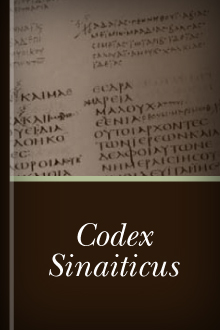
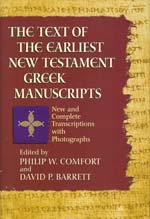
The Text of the Earliest New Testament Greek Manuscripts
If you’ve ever desired to read actual papyrus manuscripts of the NT, the volume by Comfort and Barrett is a must have. Sixty-nine manuscripts predating A.D. 325 are presented in fascimile format, along with comprehensive introductions and helpful margin notes explaining differences from the editiones principes. The introductions alone are worth acquiring the work, as they provide essential information regarding the contents, date, provenance, current location, essential bibliography, physical characteristics, and text type. This volume is most valuable when used alongside and in comparison to modern critical editions of the GNT and textual commentaries.
Other Greek Texts
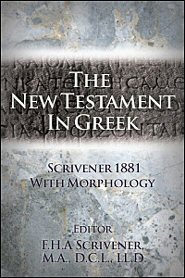
The New Testament in Greek (Scrivener 1881)
The Scrivener’s 1881 is modified Greek text which conforms to the King James Version (1611), yet includes extensive notes concerning changes made in the Revised Version (1881). The purpose behind the text was to create an edition that precisely matched the decisions made by the translation committee of the 1611 Authorized Version. Thus the base text of this edition is Theodore Beza’s Textus Receptus of 1598, but included are comprehensive notes detailing the changes made in the production of the Revised Version of 1881.
Elzevir Textus Receptus (1624) with Morphology
This edition of the GNT is an adjustment of the Stephens 1550 Textus Receptus in light of the text of the Elzevir 1624 Textus Receptus. Elzevir was a famous Dutch printing house that published two small editions of the GNT, in 1624 and 1633, and was famous for printing one of Galileo’s banned works during the Inquisition. The data used to prepare the text of the Elzevir 1624 was Scrivener’s Plain Introduction and Hoskier’s A Full Collation of Ev. 604. The Elzevir edition is an invaluable resource for understanding the transmission history of the Greek text in the latter years of the Reformation.
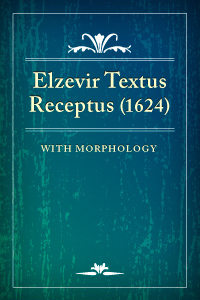
Additional Helpful Texts
In addition to the actual text of the Greek New Testament, there are a small number of resources that are essential for any serious student of the New Testament. These include works that are intended to assist users of various editions in comprehending text types, theories underlying apparatuses, and editing decisions concerning variants. Here are a few that should be included in your library:
Guides and Introductions

A User's Guide to the Nestle-Aland 28 Greek New Testament
This guide is a must-have for users of the NA28. The NA28 is a complex and precise resource whose nuances and methodologies must be understood for maximum efficiency and value. Although small, this book provides the keys to unlock the riches of the NA28 in an accessible format.
A Textual Guide to the Greek New Testament
Roger Omanson’s guide is an excellent resource for new students of Greek and those unfamiliar with (or new to) the field of textual criticism. This work is based upon Bruce Metzger’s A Textual Commentary on the Greek New Testament, but more accessible for the non-specialist. As with Metzger’s volume, Omanson’s guide explains variant readings in the text of the GNT and why certain readings are deemed more certain than others, based upon the principles of textual criticism. This work is a complement rather than a replacement of Metzger; both should be used concurrently when analyzing instances of variance in the text of the GNT.
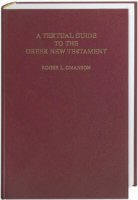
Textual Commentaries
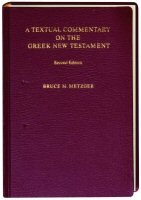
A Textual Commentary on the Greek New Testament
Metzger’s textual comments are an invaluable resource for understanding the decisions behind important variant readings in the GNT. Although intended for use alongside the 4th edition of the UBS, the comments still provide fascinating insight into how decisions are made by the editors of modern critical editions. This resource should be consulted at key points of variance in the GNT.
New Testament Text and Translation Commentary
Philip Comfort’s commentary is a useful resource for understanding the differences between various translations available to modern congregations. The volume introduces the reader to the principles of textual criticism and includes commentary on every passage of the NT. The value of Comfort’s work is in understanding the impact of variant readings on different translations of the Bible. This is, therefore, a necessary resource for the pastor and church leader whose congregants use a variety of translations, often generating questions regarding differences between them. Additionally, all of the major modern translations are tabulated and explained.
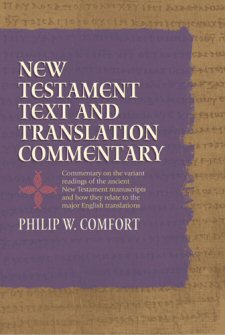
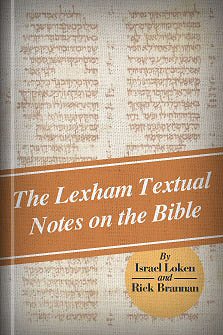
The Lexham Textual Notes on the Bible
The Lexham Textual Notes provided extended, albeit concise, commentary at key points of variance in the Greek NT text. While many modern Bible versions provide alternative readings in the margins, and modern critical editions provide lists of variants, the LTNB is the ideal resource to help determine the value of pursuing further study on any number of variant readings in the GNT. This resource fills the gap between readings in the margins and fuller textual commentaries such as Metzger, Comfort, or Alford.
Monographs
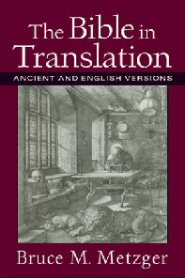
The Bible in Translation: Ancient and English Versions
Written by the preeminent Bible translator of the 20th century, Bruce Metzger’s book on the history of Bible translation is both informative and engaging. This modest volume is packed with fascinating details about the journey of the original Greek text, of the both the OT and NT, from original composition to modern English editions. Metzger’s book provides a healthy perspective on the relationship between the original Greek text and the people who use it, for translation, for study, and for devotion.
